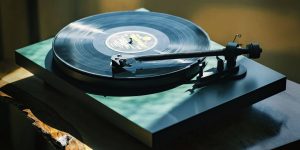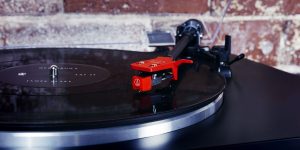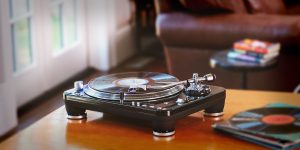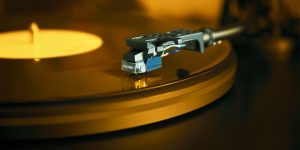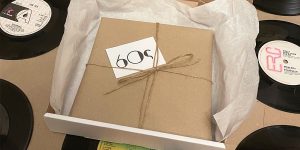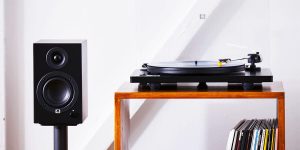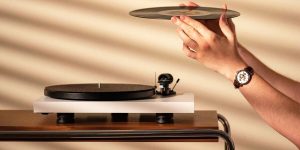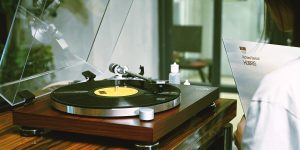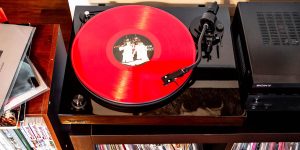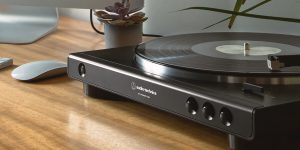As someone deeply immersed in audio equipment, I’ve encountered numerous turntable models, each with unique features. However, the quest to identify the best turntable with a built-in preamp has always stood out as a particularly intriguing challenge. In my testing and analysis, I have explored various options to help you make the perfect choice. Yes, such devices may not have high-fidelity sound, but they are simple and easy to use. By the way, many novice music lovers need exactly such criteria.
In this article, I’ll share insights and reviews to help you navigate the choices and find a vinyl player that resonates with your audio preferences and lifestyle. And before we get to my list, here’s some rather important theory to help you better understand the technical side of things.
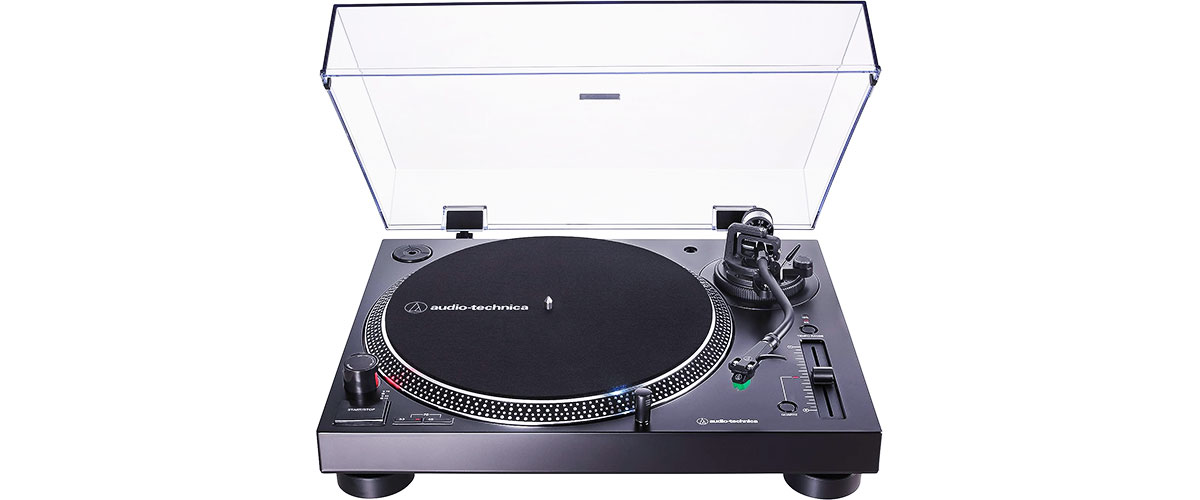
Turntables with preamp comparison table
| Name | Drive type | Operation type | Speeds | Phono Pre-Amp | Bluetooth | Review |
|---|---|---|---|---|---|---|
| Audio-Technica AT-LP120XUSB best overall | direct | manual | 33 1/3, 45, 78 RPM | yes | yes | Review |
| Fluance RT81 budget | belt | manual | 33 1/3, 45 RPM | yes | no | Review |
| Audio-Technica AT-LP7 advanced option | belt | manual | 33 1/3, 45 RPM | yes | no | Review |
| Rega Planar 1 Plus | belt | manual | 33 1/3, 45, 78 RPM | yes | no | Review |
What is a preamp?
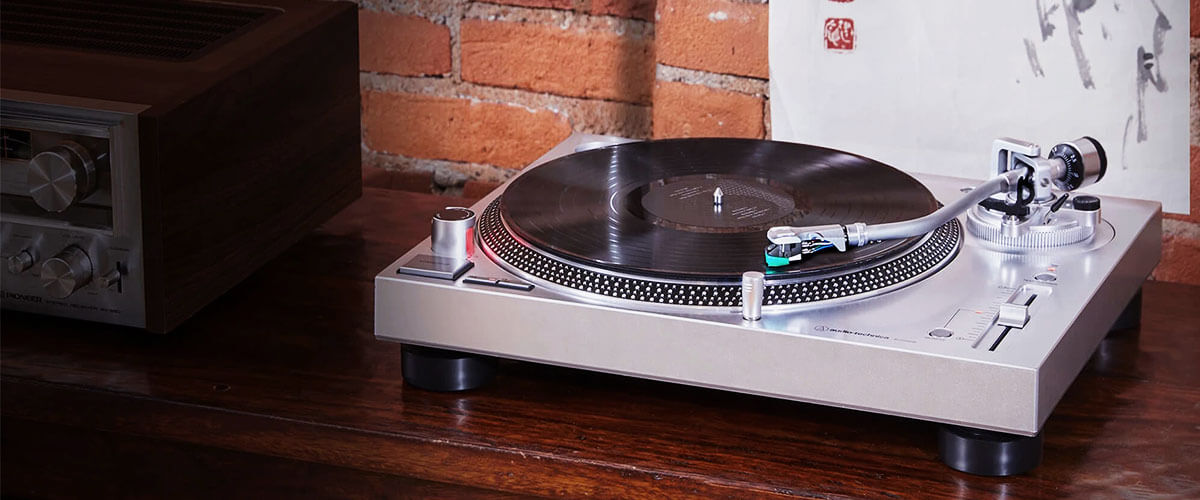
A preamplifier, often referred to as a ‘preamp’ or ‘phono stage’, plays a pivotal role in the functionality of turntables and audio systems. Its primary function is to amplify very low-level signals generated by the player’s cartridge, bringing them up to a level that a power amplifier or receiver can work with. An initial signal from a record’s grooves is exceedingly faint, and without amplification, it would be virtually inaudible. A preamp also applies the necessary RIAA equalization, which corrects the frequency imbalances created during the recording of LPs. This equalization ensures that the playback sound is true to the original recording.
Do I really need a phono preamp in my audio system?
Whether you need a separate preamplifier for a turntable largely depends on your setup and sound quality preferences. A standalone phono preamp is necessary if your TT doesn’t have a built-in preamp and you’re using an amplifier or receiver without a dedicated phono input. This is because a standard audio input can’t handle low-level signals from a turntable.
However, the need for an external device is eliminated for those with a modern turntable featuring a built-in preamp, like the models we’ll discuss in this guide. These players streamline the setup process and are often well-suited for modern audio systems, particularly if space-saving and ease of use are priorities. Additionally, a turntable with an integrated preamp can be directly connected to powered speakers or a standard line-level input on an amplifier, offering a convenient and efficient solution for enjoying LPs.
Why choose a turntable with a built-in preamp
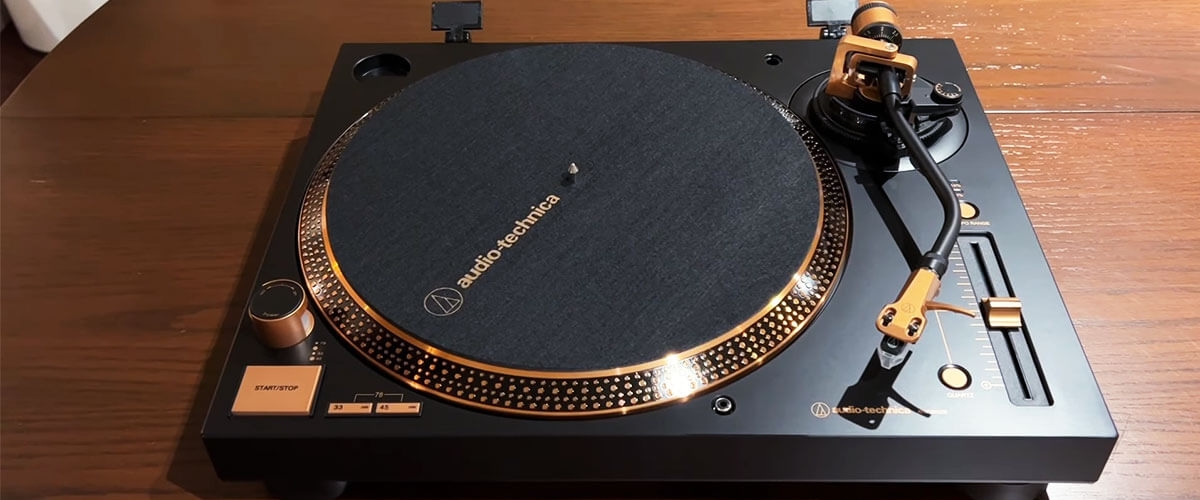
Opting for a turntable with a phono preamp offers several advantages, particularly for those who value convenience and the simplicity of tuning, do not strive for perfect sound quality, and are not ready to spend much money on expensive equipment.
Space-saving and simplified setup
One of the most compelling reasons to choose a player with a built-in preamp is the space efficiency it offers. This design eliminates the clutter of external hardware, making it ideal for compact listening areas.
This integration also simplifies the setup process significantly. Without the need to connect additional components, setting up your turntable becomes almost a plug-and-play affair.
Ease of use for beginners
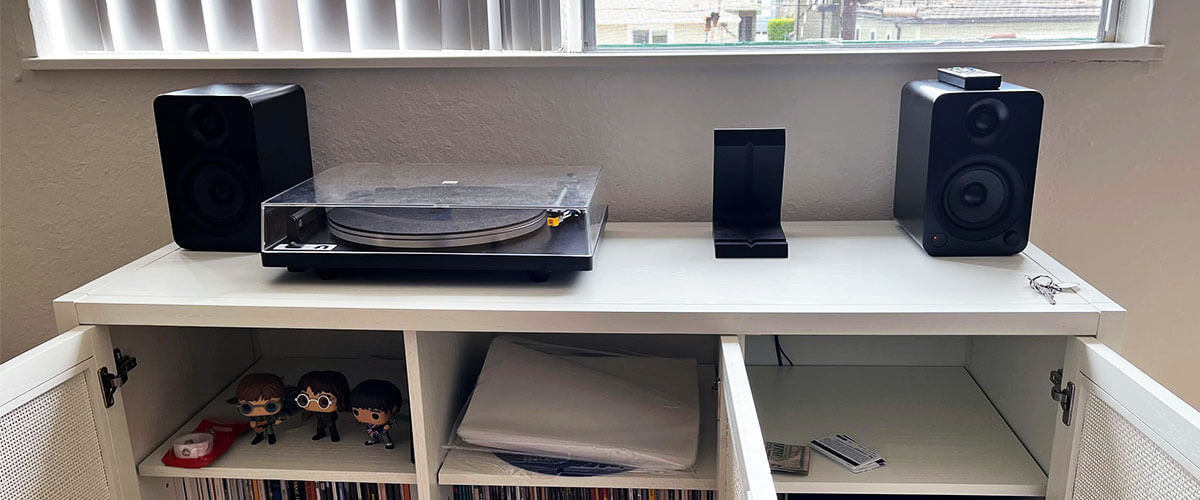
A turntable with an integrated phono stage is an excellent starting point for beginners. These models remove the complexity of matching a TT with a compatible external preamp. Newcomers can avoid the often overwhelming task of understanding technical specifications and compatibility issues. Instead, they can focus on enjoying their vinyl collection right away, with the assurance that the turntable’s output is optimized for their audio system.
Cost-effective solution
Lastly, turntables with preamps can be a more cost-effective solution. Purchasing a separate high-quality preamp can be a significant additional expense on top of the turntable itself. With a built-in preamp, you get an all-in-one package that often results in a lower overall cost compared to buying each component separately. This integrated approach saves money and ensures that the preamp is specifically designed to complement the particular turntable.
In summary, TTs with built-in phono stages offer a practical choice, combining space efficiency, easy setup, beginner-friendly operation, and cost savings. They provide an ideal solution for a hassle-free vinyl experience, suitable for various users and spaces.
Best turntable with built-in preamp reviews
Audio-Technica AT-LP120XUSB – best overall

Known for its high-quality turntables and microphones, Audio-Technica has earned numerous accolades in the audio industry for its commitment to innovation and quality. That’s why I have quite a few models of this brand in my reviews; this list was no exception. And AT-LP120XUSB made the most impression on me and topped my rating. But let’s talk about everything in turn.
Having spent considerable time with this model, I’ve come to appreciate its blend of functionality and user-friendliness. This turntable stands out with its direct-drive, DC servo motor offering selectable speeds for 33, 45, and 78 RPM records.
The fully manual operation, complete with adjustable dynamic anti-skate control and variable pitch control, allows an experience that feels both hands-on and precise. The balanced S-shaped tonearm is a highlight, demonstrating meticulous engineering for optimal tracking. But what really pleased me was the turntable’s ability to convert records to digital audio files. As someone who values both the classic feel of vinyl and the convenience of digital formats, this feature was a significant plus.
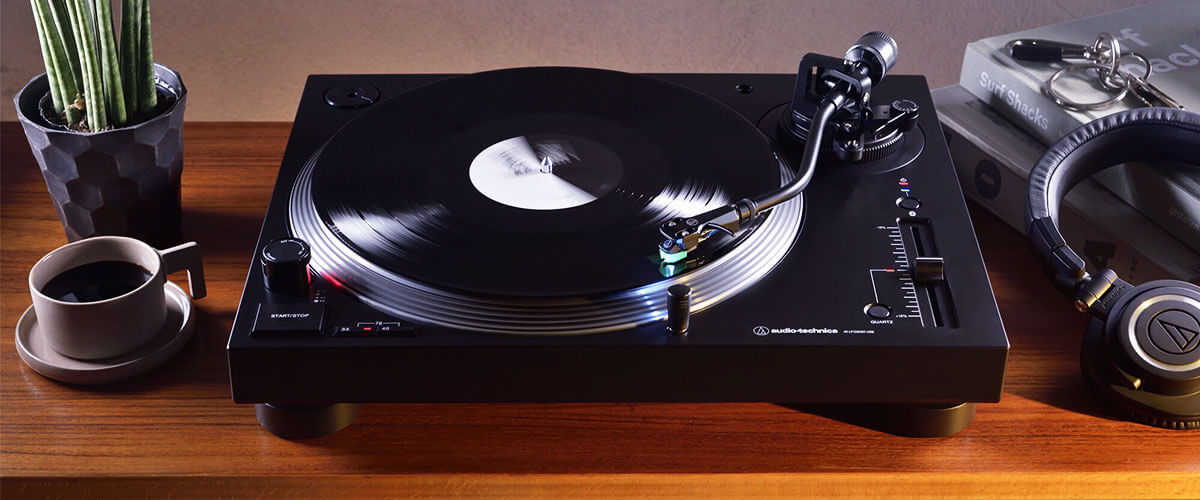
In use, the AT-LP120XUSB impresses with its sturdy build quality, which is unconventional for devices of this class. The player is heavy and robust, instilling confidence in its longevity.
Playing Billie Eilish’s “When We All Fall Asleep, Where Do We Go?” on this TT, I could appreciate its sound capabilities. It adeptly captured every detail in the music, from the rich bass to the fine trebles, with a crispness that closely rivals digital formats, a testament to the quality of its preamp.
When placed side by side with more expensive machines like the Audio-Technica AT-LP7 and the Rega Planar 1 Plus, the AT-LP120XUSB holds its ground admirably. While these higher-end models offer some improvements in sound quality and build, the AT-LP120XUSB bridges the gap with exceptional value for money. The AT-LP7 and Rega Planar 1 Plus cater more to audiophiles seeking nuanced sound enhancements, but for most listeners, the differences might not justify the price leap.
To sum up, the Audio-Technica AT-LP120XUSB exemplifies how a lower-end turntable can deliver a fulfilling vinyl experience, making it the best record player with a preamp on my list. Thanks to its versatile features, excellent sound quality, and sturdy build, this model is an ideal choice for both vinyl newcomers and those upgrading their setup.
Key specs
- Drive type: direct.
- Operation type: manual.
- Speeds, RPM: 33 1/3, 45, 78.
- Phono Pre-Amp: yes.
- Bluetooth: yes.
- USB: yes.
- Aux input: no.
Pros
- Heavy and robust construction.
- Feature-rich – includes adjustable dynamic anti-skate control, variable pitch control, and USB output for digital conversion.
- Selectable 33/45/78 RPM speeds.
Cons
- Cheap, plastic 45-RPM spindle.
- Might be slightly challenging for absolute beginners.
Fluance RT81 – budget
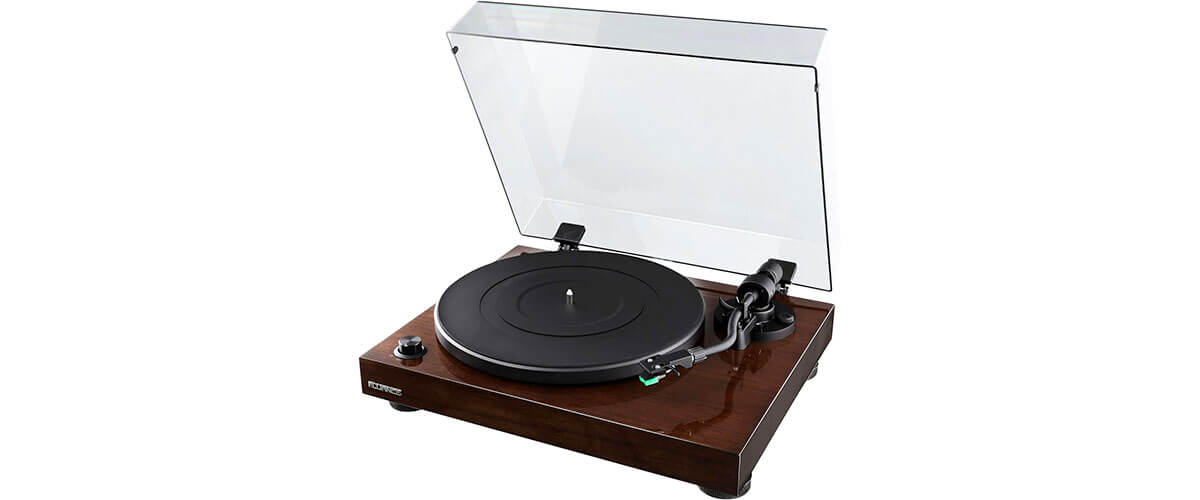
Delving into the world of budget turntables, the Fluance RT81 stands out as a remarkable option. From the moment I set it up, which was a breeze taking barely ten minutes, its virtues became evident. The player’s smooth-spinning platter, free from any warp or wobble, laid the groundwork for a reliable vinyl experience.
The construction of the RT81 caught my attention with its sturdy materials and a real wood finish that exudes a sense of classic elegance. Paired with the AT95E cartridge, diamond elliptical-tipped stylus, and a balanced aluminum S-type tonearm, the TT offers a sound quality that is warm and inviting. While the bass might be a tad understated and the treble slightly elevated on some records, these are minor quirks that don’t detract from its overall decent performance.
The RT81 also simplifies the operation with a single button for power & speed selection; plus, the turntable automatically starts spinning when you move the tonearm. This straightforwardness in design is something I greatly appreciate. It encapsulates what a good budget turntable should be – uncomplicated yet effective.
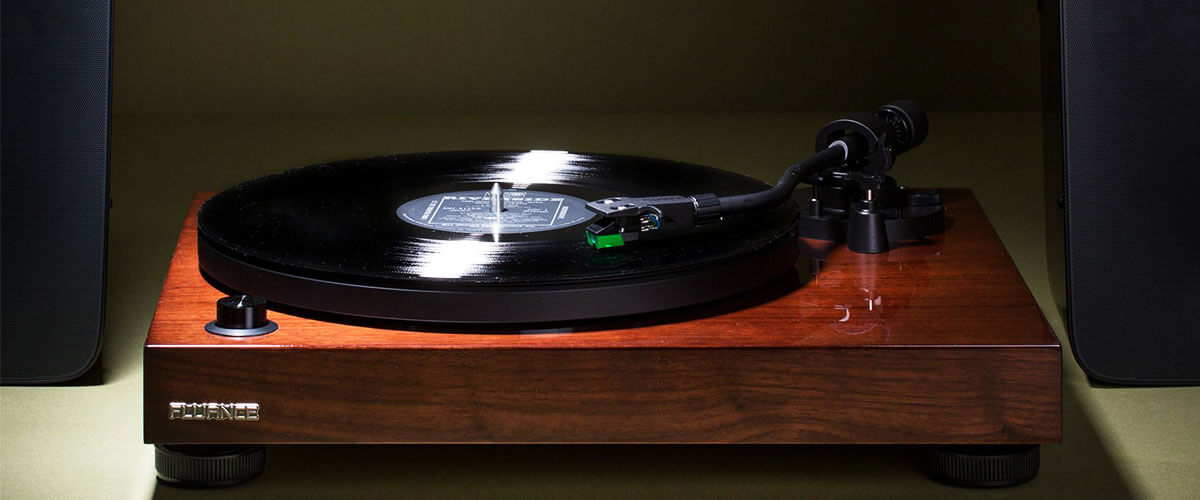
However, it’s not without some drawbacks. The adjustment for RPM, located inconveniently on the bottom, can be a bit of a hassle to access. Also, the auto-stop function, while handy, may stop the record a bit too soon for some users.
In conclusion, the Fluance RT81 shines among budget turntables, offering a blend of ease of use, elegant design, and good sound quality. It’s an ideal choice for those stepping into the vinyl world or seeking a reliable, no-fuss turntable that delivers beyond its modest price tag.
Key specs
- Drive type: belt.
- Operation type: manual.
- Speeds, RPM: 33 1/3, 45.
- Phono Pre-Amp: yes.
- Bluetooth: no.
- USB: no.
- Aux input: no.
Pros
- Easy setup – takes only about 10 minutes.
- Sturdy build.
- Changeable cartridge (suggests room for improvement).
- Simple operation with a single button for power & speed and an auto-stop function.
Cons
- Sound adjustments needed.
- The RPM adjustment is located on the bottom, making it hard to reach.
- The auto-stop function may stop the record earlier than you can expect.
Audio-Technica AT-LP7 – advanced option
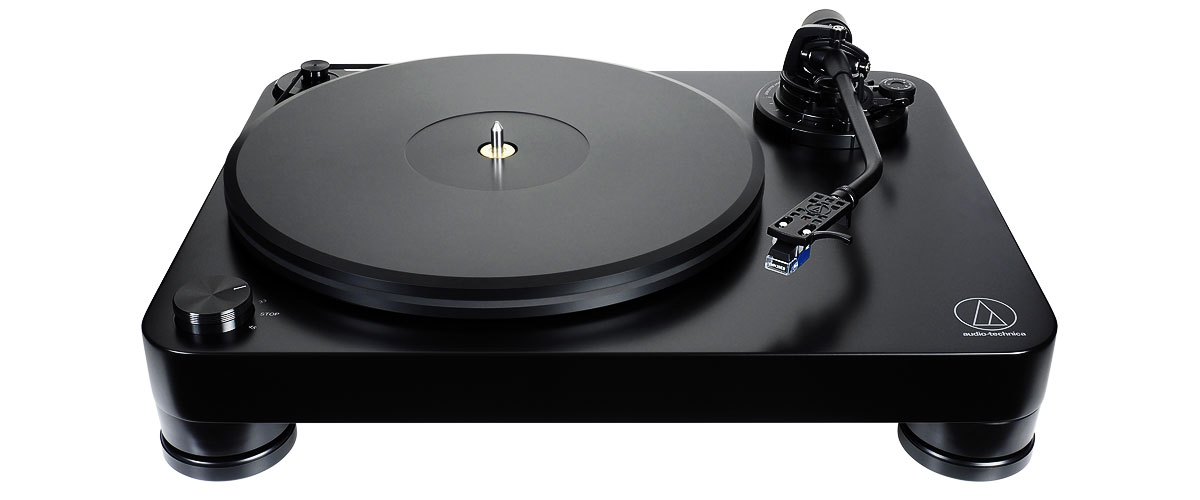
Don’t think of my bias towards this manufacturer, but while searching for the best turntables with preamp, I couldn’t pass by the AT-LP7. My time with this table was marked by an appreciation for its convenience and audio performance.
The AT-LP7 is equipped with a VM520EB Dual Moving Magnet cartridge, which allows for easy stylus replacement, offering flexibility for those who like to tweak their setup. The J-shaped tonearm, featuring a metallic gimbal suspension system and precision bearings, contributes to the player’s precise tracking capabilities. In addition, its fully manual, belt-drive operation, paired with a speed-sensor system, ensures accurate platter rotation, a feature that audiophiles will particularly appreciate.
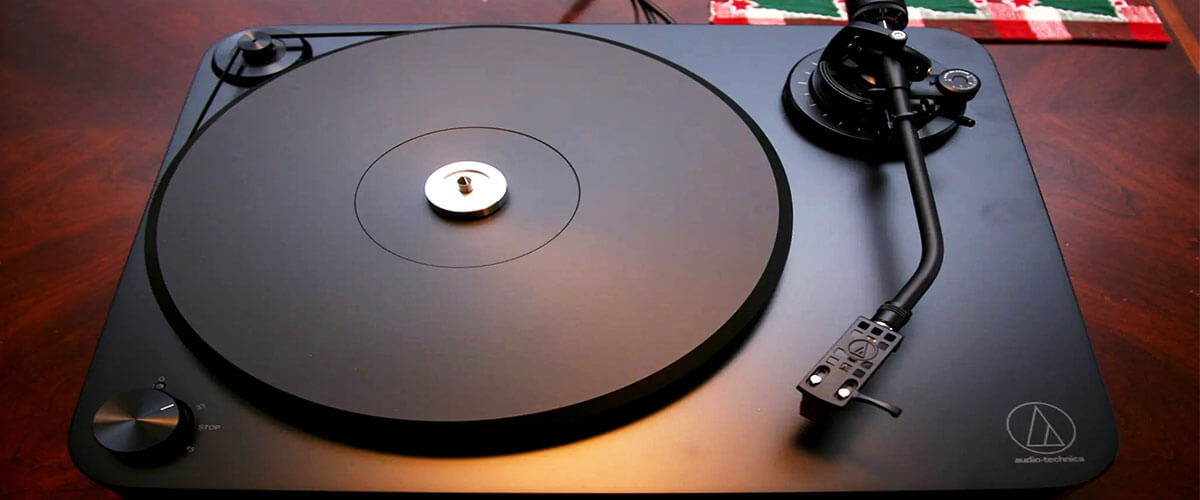
The AT-LP7’s chassis, constructed from 40 mm-thick MDF, effectively reduces low-frequency acoustical feedback, ensuring a cleaner sound. Its anti-resonance platter, made of thick polyoxymethylene, complements this by minimizing unwanted vibrations. In use, the turntable delivers a sound that is both poised and accurate. It effortlessly adapts to various music genres. Rock tracks have a robust bass punch; classical pieces are rendered with crystal-clear clarity, and jazz numbers flow smoothly with a rich, enveloping warmth. Such versatility in dealing with different musical styles has pleasantly surprised and pleased me.
The only minor quibble I had with this machine was the power cord – an old-fashioned AC adapter, which felt a bit out of place considering the turntable’s otherwise modern design.
I think that the Audio-Technica AT-LP7 is a worthy option. It is quite well made, versatile musically, and has all the basic features. It’s definitely not a “six-month model” that will start falling apart after the first listen.
Key specs
- Drive type: belt.
- Operation type: manual.
- Speeds, RPM: 33 1/3, 45.
- Phono Pre-Amp: yes.
- Bluetooth: no.
- USB: no.
- Aux input: no.
Pros
- Offers clear, accurate sound with good bass and clarity.
- Bypassable built-in phono stage supports both MM and MC cartridges.
- Heavy build and smooth operation.
- Maintains accurate platter rotation speed.
- Simple to set up, with no issues related to anti-skating.
Cons
- The old-fashioned AC adapter design.
Rega Planar 1 Plus
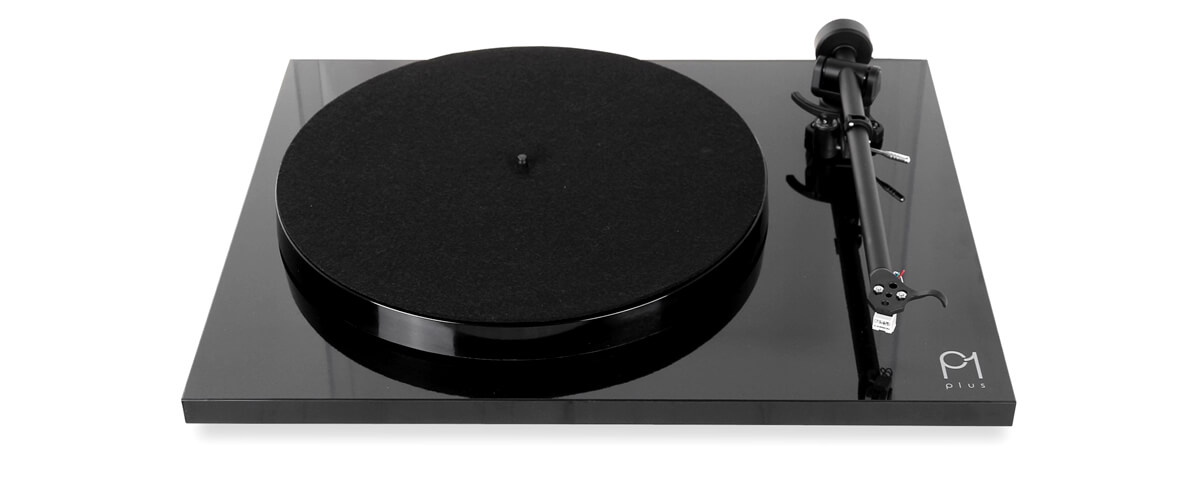
The visual charm of the Planar 1 Plus captivated me from the start. Its minimalist and sleek design effortlessly adds a touch of style to any audio system. During my listening sessions, this turntable’s functionality proved as impressive as its aesthetics. The player features an EBLT advanced drive belt and a phenolic resin platter with a flywheel effect. It has the Rega MM phono stage, the RB110 tonearm featuring ultra-low friction play bearings, and a factory-fitted Rega Carbon moving magnet cartridge. All these components work in perfect harmony, as I discovered during my time with this beauty. The sound produced was consistently crisp and detailed, bringing a new level of clarity and depth to my favorite albums. The player doesn’t just look good, it also makes your music sound great.

However, there are a few points to consider. The dust cover hinges on the Planar 1 Plus seem a bit delicate, and balancing the tonearm might be slightly challenging due to the high set anti-skate/bias. That being said, those issues do not affect TT’s functioning or sound quality.
The Rega Planar 1 Plus excels with its sleek design and high-quality performance. It’s a great choice for enhancing your vinyl experience and providing outstanding sound. Although it requires careful tuning, the effort pays off, making it a suitable option not only for beginners but also for more advanced listeners.
Key specs
- Drive type: belt.
- Operation type: manual.
- Speeds, RPM: 33 1/3, 45, 78.
- Phono Pre-Amp: yes.
- Bluetooth: no.
- USB: no.
- Aux in.: no.
Pros
- Clear, detailed audio quality, it effectively brings out the nuances in music.
- The minimalist and elegant look.
- The turntable operates reliably and smoothly.
Cons
- The dust cover hinges could be more robust.
- Tricky tonearm balancing.
- The mat on the platter appears slightly off balance.
FAQ
How do I know if my turntable has a built-in preamp?
Can I add an external preamp to a turntable with a built-in preamp?
Is there any interference or loss in sound quality due to the built-in preamp?
Why is there a significant price difference between turntables with and without built-in preamps?
We are supported by our audience. When you purchase through links on our site, we may earn an affiliate commission at no extra cost to you.
Our newsletter
* We will never send you spam or share your email with third parties

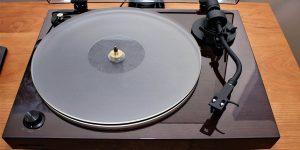

![Best Turntables Under $100 [Reviewed and Tested]](https://righttechadvice.com/wp-content/uploads/2023/09/best-turntable-under-100-300x150.jpg)
![Best Turntables Under $300 [Reviewed and Tested]](https://righttechadvice.com/wp-content/uploads/2023/10/best-turntable-under-300-review-300x150.jpg)
![Best Record Players Under $200 [Reviewed and Tested]](https://righttechadvice.com/wp-content/uploads/2023/10/best-turntable-under-200-300x150.jpg)
